Origins Of Leek Cultivation
Leeks are vegetables that belong to the Allium family, which also includes onions, garlic, and chives. Originally from central Asia, leeks have been cultivated for thousands of years and have been used as both a culinary ingredient and a medicinal herb.
The cultivation of leeks is believed to have started in Ancient Egypt and Mesopotamia around 4000 BC. The ancient Greeks and Romans also cultivated leeks, using them in various recipes and believing in their health benefits. Later on, leeks became popular in Europe during the Middle Ages, where they were grown in monastery gardens and used for their medicinal properties.
- The ancient Egyptians and Mesopotamians were the first to cultivate leeks around 4000 BC.
- Leeks were popular in Europe during the Middle Ages, where they were grown in monastery gardens.
Leeks were introduced to North America in the early 19th century and are now widely cultivated in many countries around the world. Today, the largest producers of leeks are China, Turkey, and France, followed by the United States, Spain, and Belgium.
- North America was introduced to leeks in the early 19th century.
- China, France, and Turkey are the largest producers of leeks in the world.
| Nutrient | Amount Per 100 grams |
|---|---|
| Calories | 61 kcal |
| Protein | 1.5 g |
| Fat | 0.3 g |
| Carbohydrates | 14.2 g |
| Fiber | 1.8 g |
In addition to being delicious, leeks are also highly nutritious. They are a good source of vitamins C and K, as well as potassium and folate. Leeks are also low in calories and carbohydrates, making them a great choice for those trying to lose weight or watch their carbohydrate intake. Furthermore, leeks contain polyphenols, which have antioxidant properties and may help protect against chronic diseases such as cancer and heart disease.
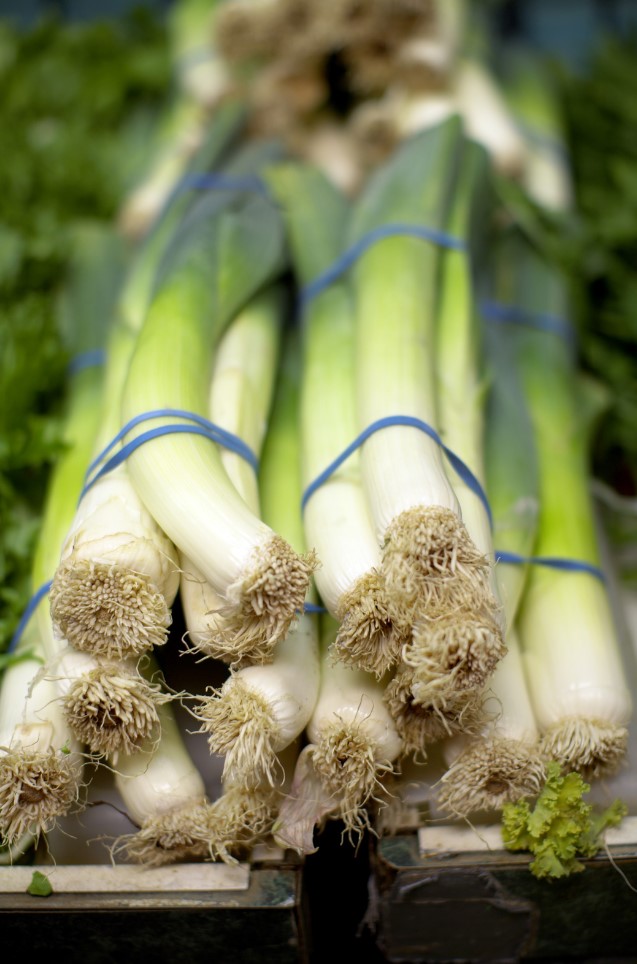
Overall, the history of leek cultivation is long and rich, with a deep and complex cultural significance. Whether used in cooking or in traditional medicine, leeks have played an important role in human health and well-being throughout history.
Nutritional Value Of Leeks
Leeks belong to the same family as onions and garlic and have been cultivated for thousands of years. Native to the Mediterranean region, they were mostly used for medicinal purposes in ancient times. Today, leeks are widely consumed all over the world for their unique flavor and nutritional benefits.
Leeks are low in calories and contain high levels of fiber, making them an ideal food for weight management. Additionally, they are rich in vitamins A, C, and K, which are essential for maintaining healthy skin, supporting the immune system, and promoting bone health. Leeks also contain healthy amounts of folate, a B-vitamin that helps protect against birth defects and supports red blood cell production.
- Leeks contain high levels of antioxidants, which help fight disease-causing free radicals in the body. These compounds have been linked to a reduced risk of chronic conditions such as heart disease, cancer, and Alzheimer’s disease.
- Leeks are also a good source of iron, which is necessary for healthy blood circulation and preventing anemia.
- The high sulfur content in leeks is responsible for its unique flavor and also serves as a natural antibiotic for the body.
- Leeks are versatile and can be cooked in many ways. They can be sliced, sautéed, and used as a topping for pizzas and salads. They can also be boiled, grilled, or roasted and used in soups, stews, and casseroles.
Leeks are an excellent addition to any diet due to their many health benefits. They are low in calories and high in important vitamins and minerals, making them an ideal food for maintaining good health. With a variety of ways to prepare and cook them, leeks are a delicious and nutritious addition to any meal.
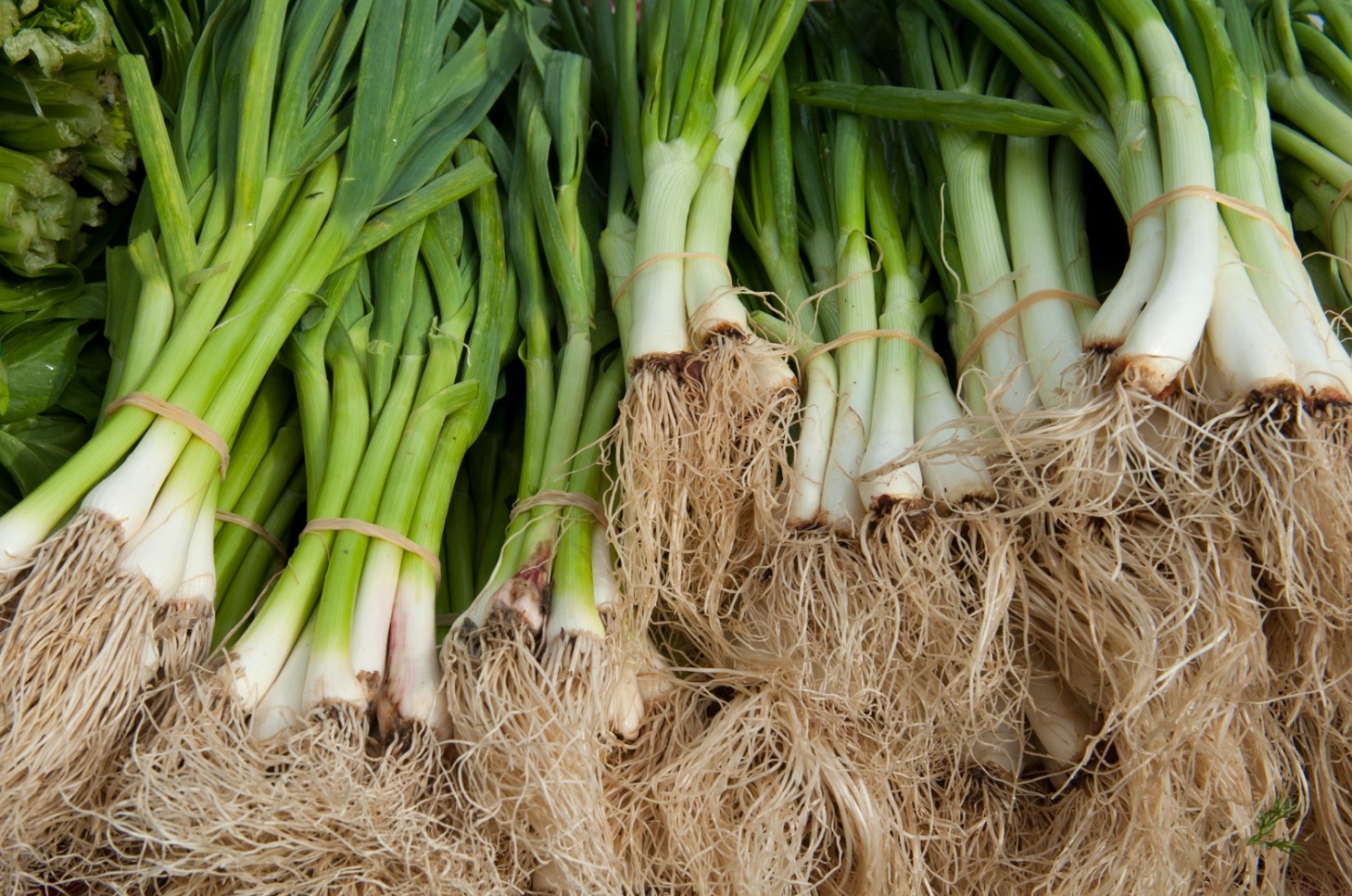
Role Of Leeks İn Weight Loss
When it comes to weight loss, people often think about extreme diets and cutting out entire food groups. However, incorporating certain healthy foods into your diet can actually help with weight loss, and leeks are one such food.
Leeks are low in calories and high in fiber, which means they can make you feel full for longer periods of time. This can help prevent overeating and keep your calorie intake in check. Including leeks in your meals can also provide you with essential nutrients that your body needs, without adding extra calories.
- A half-cup serving of leeks contains only 16 calories.
- Leeks are high in vitamin K, which plays a role in bone health.
- They also contain vitamin C, which can boost the immune system.
Additionally, research suggests that leeks have specific compounds that can aid in weight loss. One compound, called kaempferol, has been found to reduce inflammation and prevent the accumulation of fat cells in the body. Another compound, called polyphenols, can regulate blood sugar levels and improve insulin sensitivity, which can aid in weight loss.
Incorporating leeks into your meals is easy. They can be added to soups, stews, salads, and more. Leeks can also be used as a low-calorie substitute for higher-calorie ingredients, such as potatoes or pasta. For example, try using sliced leeks as a base for a stir-fry instead of rice, or swap mashed leeks for mashed potatoes.
| Nutrient | Amount per ½ cup serving |
|---|---|
| Calories | 16 |
| Fiber | 1.6g |
| Vitamin K | 29% of the Daily Value |
| Vitamin C | 12% of the Daily Value |
In conclusion, leeks can be a valuable addition to any weight loss plan. They are low in calories, high in fiber, and contain compounds that can aid in weight loss. Plus, they are versatile and easy to incorporate into your meals. So, if you’re looking to shed some pounds, consider adding more leeks to your diet.
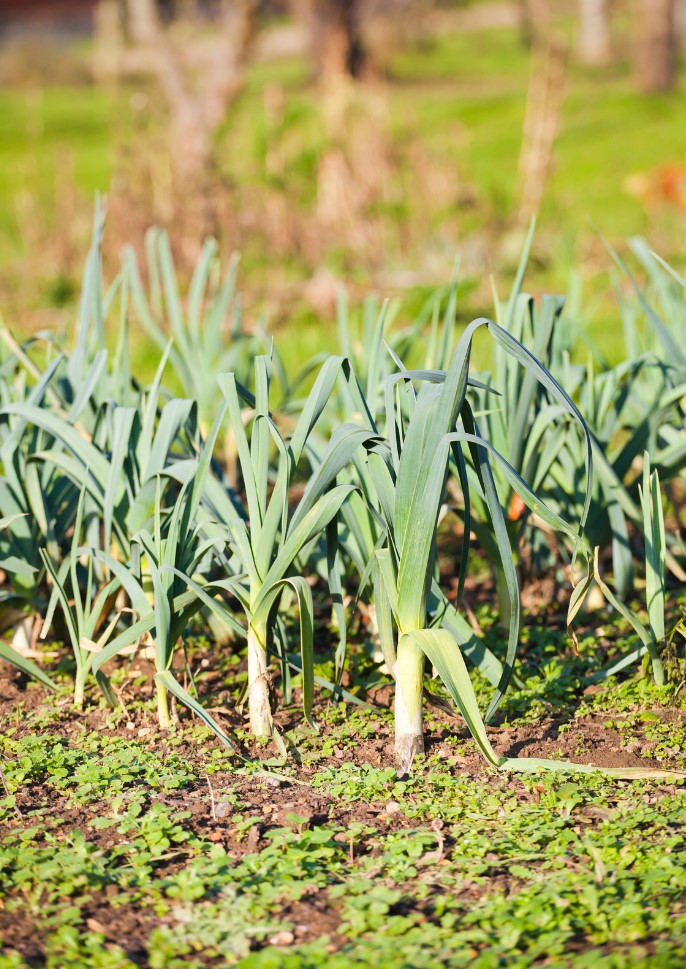
Antioxidant Properties Of Leeks
Leeks are a member of the Allium family of vegetables, which also includes onions, garlic, and shallots. While they may resemble an oversized scallion, leeks have a more delicate taste and a slightly sweet flavor. In addition to being a delicious addition to almost any meal, leeks are incredibly nutrient-dense and boast a number of health benefits. One of the most notable benefits of consuming leeks is their high antioxidant content, which can help protect your body from cellular damage caused by free radicals.
The antioxidant properties of leeks are due to their high levels of flavonoids and sulfur-containing compounds. Flavonoids are a type of antioxidant that are particularly effective at neutralizing free radicals in the body. Sulfur-containing compounds are also potent antioxidants that have been shown to have a number of health benefits, including reducing inflammation and protecting against cancer.
- Some of the other health benefits associated with consuming leeks include:
- Improving digestion
- Promoting heart health
- Enhancing bone health
- Boosting the immune system
- Reducing inflammation in the body
If you’re looking to add more leeks to your diet, there are many delicious ways to incorporate them into your meals. One popular way to prepare leeks is to sauté them in a little bit of olive oil with some garlic and herbs. They can also be used as a flavoring agent in soups and stews, or sliced thinly and added to a salad.
| Per 100g of leeks | Amount |
|---|---|
| Calories | 31 |
| Protein | 1.5g |
| Carbohydrates | 7.6g |
| Fat | 0.3g |
Whether you’re looking to promote better health or simply enjoy the delicious taste of leeks, there are many reasons to make them a regular part of your diet. So why not try incorporating them into your meals today?
Benefits Of Consuming Leeks For Digestion
Leeks are a type of vegetable that belongs to the same family as onions and garlic. They have a mild, sweet onion-like flavor that makes them a popular ingredient in many dishes. Apart from being delicious, leeks also come with many health benefits. One such benefit is their ability to improve digestion.
Leeks are rich in soluble and insoluble fibers that help in keeping the digestive system functioning smoothly. Soluble fibers form a gel-like substance in the gut that slows down the passage of food through the intestine. This provides ample time for the enzymes to break down the food, and nutrients get absorbed efficiently. Insoluble fibers, on the other hand, add bulk to stool, making it easier to pass through the colon.
- Leeks can also help maintain a healthy gut microbiome. They contain prebiotics that provide nourishment to the beneficial bacteria residing in the intestine.
- The sulfur-containing compounds present in leeks can stimulate the liver to produce bile. This helps in breaking down fats and enhances the absorption of essential fat-soluble vitamins.
- Leeks are a low-calorie food that is high in essential nutrients such as vitamins A, C, and K, iron, potassium, and manganese. These nutrients help in strengthening the digestive system and preventing conditions such as constipation, bloating, and indigestion.
In conclusion, adding leeks to your diet can improve your digestion and overall gut health. Whether you add them to soups, casseroles, or sauté them as a side dish, leeks will surely make your meals a lot healthier and tasty.
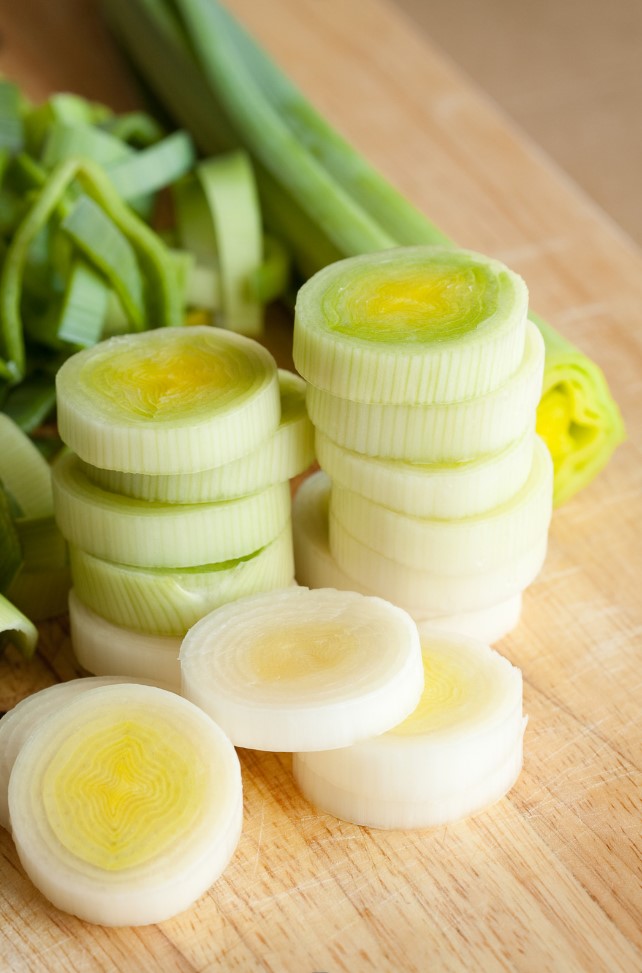
Boosting The İmmune System With Leeks
Leeks, scientifically known as Allium porrum, belong to the Allium family, which also includes garlic, onions and shallots. Native to Central Asia and Europe, leeks have been cultivated for centuries, dating back to ancient Egyptian times. These flavorful vegetables have played an essential role in traditional cooking and medicine due to their numerous health benefits, including boosting the immune system.
A strong immune system is essential for overall health and well-being, and leeks are an excellent source of various vitamins, minerals and antioxidants that help strengthen it. One of the essential nutrients found in leeks is vitamin C, which is known for its immune-boosting properties by stimulating the production of white blood cells that defend against infections and viruses.
- Leeks are also rich in polyphenols, flavonoids and sulfur compounds that have been shown to boost the immune system by fighting off harmful bacteria and viruses in the body.
- They contain high amounts of vitamin A, which plays a critical role in maintaining healthy skin and mucous membranes, another line of defense against infections.
- Furthermore, leeks are a rich source of vitamin K, which helps with the production of immune cells, and iron, which is vital for healthy blood and immune function.
Incorporating leeks into your diet is an easy way to improve your immune system. It can be added to salads, soups, stews, stir-fries or roasted as a side dish. It’s best to cook leeks gently to retain their nutrients and avoid overcooking them.
| Nutrients | Amounts per 100g |
|---|---|
| Calories | 61 kcal |
| Carbohydrates | 14.15 g |
| Protein | 1.5 g |
| Fiber | 1.8 g |
| Vitamin C | 12 mg |
| Vitamin A | 833 IU |
| Vitamin K | 47 μg |
| Iron | 2.1 mg |
In conclusion, leeks are superfoods that are not only delicious but also provide vital nutrients that improve immune function, making them a valuable addition to any diet. So if you want to stay healthy, start incorporating leeks to your meals and reap the benefits of their immune-boosting properties.
Relieving İnflammation With Leeks
Leeks are a type of vegetable part of the allium family, along with garlic and onions. With their mild and sweet taste, they can be enjoyed both raw and cooked, and they are incredibly versatile in the kitchen. But did you know that leeks also have anti-inflammatory properties that can benefit your health?
Leeks contain a compound called kaempferol, which has been shown to reduce inflammation in the body by inhibiting the production of pro-inflammatory molecules. This can be particularly beneficial for those with chronic inflammatory conditions like arthritis, asthma, or even cardiovascular disease.
- One way to incorporate more leeks into your diet is by adding them to your soups or stews.
- You can also try roasting them with other vegetables and serving them as a side dish.
- For a lighter option, you can chop them up and add them to your salads for a crunch.
But it’s not just the kaempferol in leeks that can help reduce inflammation. They are also rich in antioxidants, specifically polyphenols and sulfur compounds, that can protect your cells from oxidative stress and damage. This can further contribute to the anti-inflammatory effects of leeks.
| Nutrient | Amount per 1 cup (89g) |
|---|---|
| Vitamin K | 56% of the Daily Value (DV) |
| Vitamin A | 14% of the DV |
| Vitamin C | 12% of the DV |
| Folate | 10% of the DV |
Additionally, leeks are a good source of vitamin K, which is important for maintaining healthy bones and preventing inflammation as well. They are also low in calories but high in fiber, making them a great option for weight management and digestion. So next time you’re looking to relieve inflammation naturally, consider incorporating more leeks into your meals.
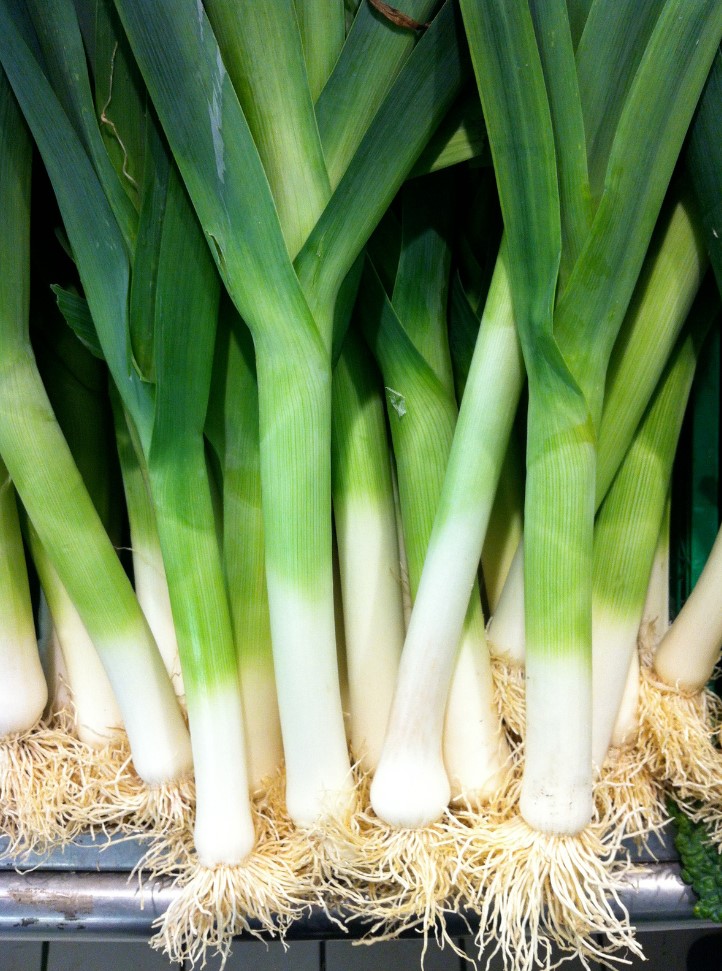
Promoting Heart Health With Leeks
Leeks are a member of the Allium family, which also includes garlic and onions. They have a mild, sweet flavor and are often used in soups and stews. But did you know that consuming leeks can also promote heart health?
One of the reasons that leeks are beneficial for heart health is their high level of flavonoids. Flavonoids are plant compounds that have antioxidant properties, which means they help to protect the body from damage caused by free radicals. Free radicals can promote inflammation in the body, which is a risk factor for heart disease. By consuming foods that are high in flavonoids, like leeks, you can reduce your risk of heart disease.
- Flavonoids are plant compounds with antioxidant properties.
- Leeks are high in flavonoids.
- Consuming foods that are high in flavonoids, like leeks, can reduce the risk of heart disease.
Another way that leeks can promote heart health is by reducing high blood pressure. High blood pressure is a major risk factor for heart disease. A study published in the journal Hypertension found that consuming a diet high in vegetables, including leeks, can help to reduce blood pressure. This is due to the high level of potassium in leeks, which can help to counteract the effects of sodium in the diet.
| Benefits of Leeks for Heart Health |
|---|
| Reduces inflammation in the body |
| High in flavonoids, which have antioxidant properties |
| Reduces high blood pressure |
| Contains potassium, which can counteract the effects of sodium in the diet |
So, if you’re looking for a delicious way to promote heart health, consider adding more leeks to your diet. They’re versatile and can be used in a variety of dishes. Try using them in soups, stews, salads, or even as a side dish. Your heart will thank you!
Enhancing Bone Health Through Leek Consumption
Leeks are a versatile vegetable that can be enjoyed in many dishes, but did you know they also have health benefits? One of the benefits of leeks is that they can enhance bone health through consumption.
Leeks are packed with vitamins and minerals that are important for bone health. One mineral in particular is calcium. Calcium is crucial for building bones and maintaining bone density. Leeks contain about 52 milligrams of calcium per 100 grams of vegetable, which can contribute to the recommended daily intake of calcium for adults.
- Phosphorus is another important mineral for bone health found in leeks. Phosphorus works with calcium to create strong bones and teeth. Leeks have about 35 milligrams of phosphorus in 100 grams of vegetable.
- Along with minerals, vitamin K is also present in leeks. Vitamin K helps to improve bone density and reduce the risk of fractures. A study showed that consuming more vitamin K can lower the risk of hip fractures in women by up to 30%. Leeks have about 47 micrograms of vitamin K per 100 grams of vegetable.
It’s important to note that while leeks can contribute to a healthy diet, they should not be the only source of these important nutrients. A well-rounded diet that includes other sources of calcium, phosphorus, and vitamin K is needed to achieve optimal bone health.
| Nutrient | Amount per 100g of Leeks | % Daily Value |
|---|---|---|
| Calcium | 52mg | 5% |
| Phosphorus | 35mg | 5% |
| Vitamin K | 47mcg | 59% |
Overall, incorporating leeks into your diet can have a positive impact on your bone health due to their calcium, phosphorus, and vitamin K content. Try adding them to soups, stews, or stir-fries for a flavorful and nutritious boost.
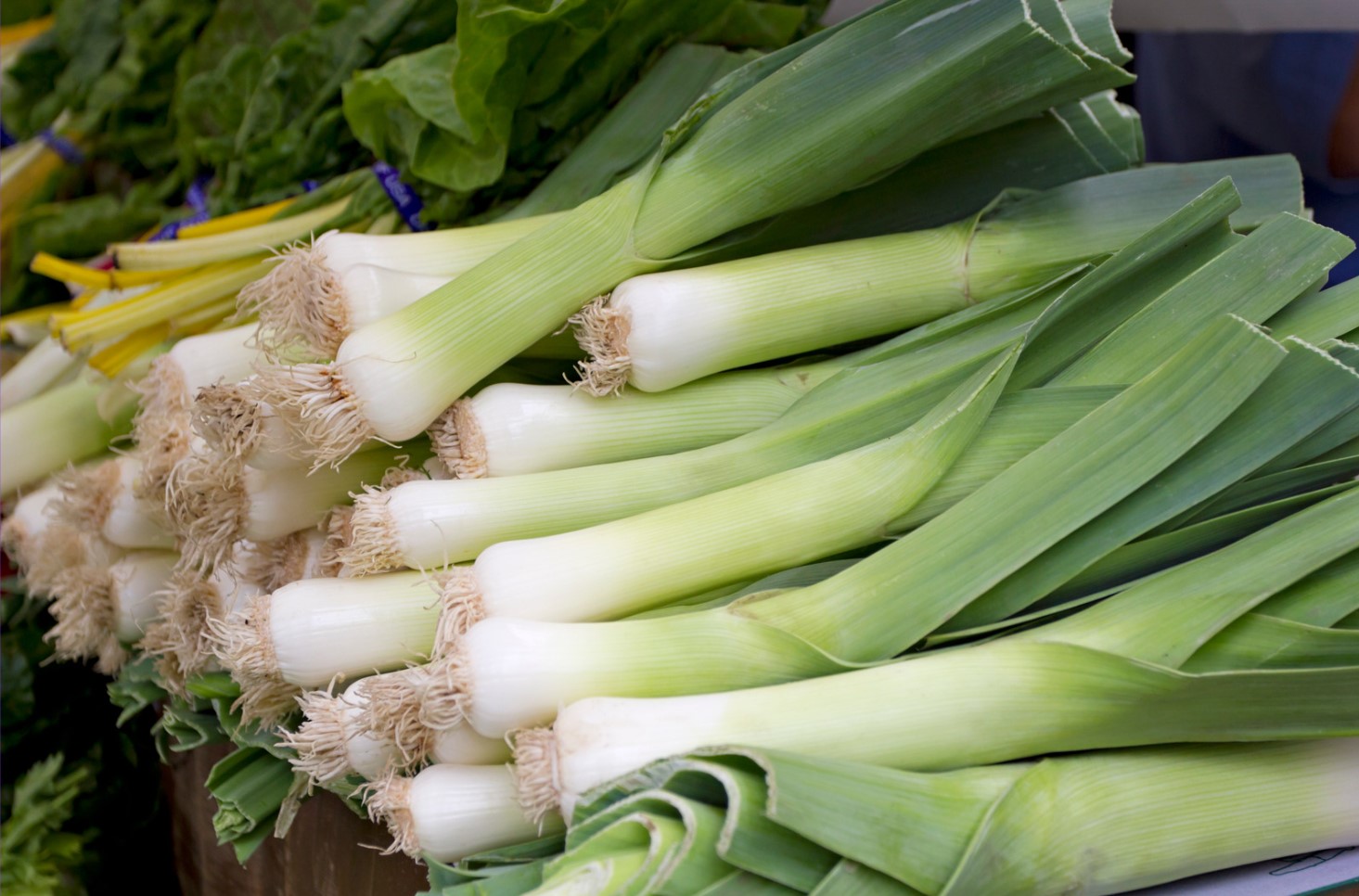
Minimizing The Risk Of Cancer With Leeks
Leeks are a type of vegetable that are part of the onion family. They have a mild, sweet flavor and are often used in soups and stews. However, what you may not know is that leeks have a lot of health benefits. One of the most interesting benefits of leeks is that they may be able to help minimize the risk of cancer.
Leeks contain several compounds that are believed to have anti-cancer properties. For example, they are rich in sulfur-containing compounds called alliums. These compounds have been found to have cancer-fighting properties. Studies have shown that alliums may be able to help prevent the growth of tumors and may also be able to induce cancer cell death.
- In addition to alliums, leeks also contain other compounds that are believed to have anti-cancer properties. For example, they are rich in vitamin C and other antioxidants. These compounds may be able to help protect the body against the damaging effects of free radicals, which can damage cells and lead to cancer.
- Leeks also contain potassium, which is important for maintaining healthy blood pressure levels. High blood pressure has been linked to an increased risk of several types of cancer, so maintaining healthy blood pressure levels may help reduce the risk of cancer.
While more research is needed to fully understand the cancer-fighting properties of leeks, there is some evidence to suggest that they may be able to help minimize the risk of cancer. So, if you’re looking for a way to boost your health and reduce your risk of cancer, incorporating leeks into your diet may be a good place to start.
| Leeks | % Daily Value* |
|---|---|
| Vitamin C | 15% |
| Potassium | 6% |
| Folate | 10% |
| Vitamin K | 15% |
Overall, leeks are a nutritious and delicious vegetable that may be able to help minimize the risk of cancer. Whether you incorporate them into your soups and stews or find other creative ways to enjoy them, leeks are definitely worth adding to your diet.
Preparing And Cooking Leeks
Leeks are a versatile and delicious vegetable that can be enjoyed in a variety of ways. Whether roasted, sautéed, or pureed into a soup, leeks add a unique flavor to any dish. However, many people are intimidated by the thought of preparing and cooking this vegetable, as it can be quite tricky to clean and cut. In this blog post, we will explore the steps involved in preparing and cooking leeks, as well as some delicious recipes that highlight this tasty ingredient.
Step 1: Choosing and Cleaning Leeks
The first step in preparing leeks is selecting the best ones at the store. Look for leeks that have a firm, straight white bulb and long, bright green leaves. When it comes to cleaning leeks, they can be quite sandy and gritty, so it’s essential to wash them thoroughly. Cut off the roots and remove the top leaves, leaving about 1-2 inches of green. Slice the leek in half lengthwise and wash each half under running water, making sure to separate the layers to remove any dirt or sand trapped between them.
- Braised Leeks
- 4 medium-sized leeks
- 1 cup chicken or vegetable broth
- 2 tablespoons butter
- 1 tablespoon olive oil
- Salt and pepper
- Leek and Potato Soup
- 3 leeks, white and light green parts only, thinly sliced
- 1 tablespoon unsalted butter
- 1 tablespoon olive oil
- 2 cloves garlic, minced
- 1 pound potatoes, peeled and cubed
- 4 cups low-sodium chicken broth
- Salt and pepper
- Roasted Leeks
- 2 large leeks, white and light green parts only, halved lengthwise
- 1 tablespoon olive oil
- Salt and pepper
Step 2: Cooking Leeks
Once you have cleaned and prepped your leeks, they are now ready to be cooked. There are many ways to cook leeks, including braising, roasting, sautéing, and grilling. Here are a few recipes that showcase the versatility of this vegetable:
Braised Leeks: In a saucepan, heat the butter and olive oil until melted. Add the leeks and cook until tender, about 10 minutes. Pour in the broth and simmer until the liquid has reduced by half, about 20 minutes. Season with salt and pepper to taste.
Leek and Potato Soup: In a large pot, heat the butter and oil over medium heat. Add the leeks and garlic and cook until softened, about 5 minutes. Add the potatoes and broth, and bring to a boil. Reduce heat and simmer until the potatoes are tender, about 20 minutes. Using an immersion blender, puree the soup until smooth. Season with salt and pepper to taste.
Roasted Leeks: Preheat your oven to 400 degrees. Arrange the leeks on a baking sheet and drizzle with olive oil. Season with salt and pepper and roast in the oven for 20-25 minutes, until tender and golden brown.
Leeks are a delicious and nutritious vegetable that can be enjoyed in many different ways. By following these simple steps for cleaning and cooking leeks, you can add a unique flavor to any dish.
Different Cuisines That İncorporate Leeks
Leeks are a versatile ingredient that can add a unique flavour to any dish, be it soups, salads or even stir-fries. Due to its subtle onion-like flavour and slightly sweet taste, leeks are an excellent ingredient to use in different cuisines around the world. In this blog post, we will look at different cuisines that incorporate leeks in their traditional dishes.
French Cuisine: Leeks are a staple ingredient in French cuisine, particularly in their famous soup, the Potage Parmentier or Leek and Potato Soup. This soup is a thick soup made with sauteed leeks, onions, potatoes, chicken or vegetable stock, and cream. It is typically served as a starter, but it can also be eaten as a main course.
Chinese Cuisine: In Chinese cuisine, leeks are widely used in various stir-fries and dumplings. One of the most popular dishes is the jiucai hezi or Leek Ravioli. It is a dumpling filled with chopped leeks, scrambled eggs, and sometimes ground pork. This dish is typically eaten during the Chinese New Year.
Greek Cuisine: In Greek cuisine, leeks are commonly used in pies, salads, and soups. One of the most popular dishes is prassopita or Leek Pie. It is made with layers of phyllo pastry, sauteed leeks, cheese, and herbs. It is typically served as an appetizer or as a light main dish.
Irish Cuisine: Leeks are a staple ingredient in Irish cuisine, particularly in their famous dish, the Irish Stew. This stew is made with lamb or beef, potatoes, carrots, onions, and leeks. It is a hearty and comforting dish that is perfect for cold weather.
| Cuisine | Popular Dish |
|---|---|
| French | Potage Parmentier or Leek and Potato Soup |
| Chinese | Jiucai Hezi or Leek Ravioli |
| Greek | Prassopita or Leek Pie |
| Irish | Irish Stew |
There are many other cuisines that incorporate leeks in their traditional dishes, such as Japanese, Korean, and Turkish cuisine. It is fascinating to see how a simple ingredient like leeks can add such depth and flavour to a dish.
In conclusion, leeks are a versatile ingredient that can be used in various dishes across different cuisines around the world. Whether it be soups, pies, dumplings or stir-fries, leeks can add a unique and delicious flavour to any dish. So, why not experiment with your cooking and try out some new recipes using leeks?
Use Of Leeks İn Traditional Medicine
Leeks have been used in traditional medicine for centuries due to their numerous health benefits. While they are mostly known for their culinary uses, leeks are also a popular ingredient in many traditional medicines. The plant has been used to treat various illnesses, such as flu, colds, and gastrointestinal problems.
One major benefit of leeks in traditional medicine is their ability to boost digestion. Leeks are high in fiber, which helps to regulate bowel movements and prevent constipation. In addition, leeks contain prebiotics, which are essential for maintaining a healthy gut flora.
- Leeks are also known for their anti-inflammatory properties. They are rich in antioxidants such as polyphenols, which help to reduce inflammation and protect against oxidative stress. This makes them an ideal ingredient for treating arthritis and other inflammatory conditions.
- Leek juice has been used as a natural remedy for sore throats and coughs. The juice contains compounds that help to soothe the throat and reduce irritation. Drinking leek juice can also help to reduce mucus production in the respiratory tract.
Aside from their medicinal uses, leeks are also used in traditional medicine for their ability to promote heart health. They contain compounds that help to lower blood pressure and reduce the risk of heart disease. Leeks are also rich in folate, which is essential for the production of red blood cells.
| Traditional Medicine Benefits | Culinary Benefits |
|---|---|
| Boosting digestion | Flavorful addition to soups, stews, and salads |
| Reducing inflammation | Common ingredient in many recipes |
| Treating sore throats and coughs | High in vitamins and minerals, including vitamin K, vitamin C, and iron |
| Promoting heart health | Low calorie and low fat |
Overall, leeks are a versatile and beneficial ingredient that can be used both in cooking and traditional medicine. They are packed with vitamins, minerals, and antioxidants that help to prevent various diseases and keep the body healthy. So next time you add leeks to your soup or salad, you’ll know that not only are you adding flavor, but also promoting your health.
Growing Leeks İn Home Gardens
Leeks are an excellent vegetable that is incredibly easy to grow for home gardeners. They are a member of the onion family, and they grow wonderfully in gardens, containers, or even pots in the kitchen. Growing leeks can be a fun and rewarding experience, not just for seasoned gardeners but even for beginners. Here are a few essential tips on how to grow leeks in your home garden:
- Prepare your soil before planting your leeks. Leeks prefer fertile soil that is well-drained and slightly acidic. The soil should also be loose and friable. Organic matter, such as compost or manure, can be added to aid in nutrient retention and to help prevent soil compaction.
- Leeks need plenty of sunshine to grow properly. Therefore, it is best to plant them in an area that receives full sun. A minimum of 6 hours of sunlight per day is ideal for the plants to thrive.
- The best time to plant leeks is during the spring or fall seasons. Start by planting the seeds in small pots or trays and then transplanting them into the garden bed when they reach a suitable size.
- Once your leeks are fully grown, it’s time to harvest them. The recommended harvesting method involves gently lifting the plants out of the ground with a garden fork, being careful not to damage the roots. Then, remove the top leaves and cut off the roots, leaving only the white and light green parts of the plant.
If you are looking for a vegetable to add to your home garden, leeks are an excellent choice. They are easy to grow, require very little maintenance, and taste great in a variety of dishes. Plus, they provide numerous health benefits such as antioxidant properties, vitamin and mineral content (especially vitamin K), and the ability to promote healthy digestion. Growing leeks in your home garden is a sustainable way to provide your family with fresh, nutritious vegetables year-round.
Sustainable Farming Practices For Leeks
Leeks are vegetables that are commonly used in numerous dishes, adding flavor and nutrition to meals. Growing leeks can be an excellent way to ensure a steady supply of these vegetables at home. Sustainable farming practices for leeks are essential to maintain their quality and ensure the safety and health of the environment. These practices involve the use of methods that preserve the natural resources and protect the soil from degradation.
Sustainable farming practices for leeks involve using organic fertilizers and compost that are rich in nutrients. By avoiding synthetic fertilizers, farmers can reduce their carbon footprint and promote soil health. These organic fertilizers improve the quality of the soil, increase its water-holding capacity, and enhance its capacity to retain nutrients. This leads to healthy, nutrient-rich soil and healthy plants, which produce higher quality leeks.
- One of the sustainable farming practices for leeks includes crop rotation. This process ensures that the soil is not depleted of nutrients and allows farmers to control pests and diseases naturally. By rotating leeks with other crops, the soil can recover its nutrients, reducing the need for artificial fertilizers.
- Another sustainable farming practice is intercropping leeks with other plants. This technique involves planting other vegetables, such as onions or garlic, between the rows of leeks. This can help control pests and diseases and provide a beneficial habitat for beneficial insects that can help in pollination and pest control.
The use of natural predators is also a critical element of sustainable farming practices. Beneficial insects such as ladybugs, lacewings, and parasitic wasps can help control pests without the use of harmful chemicals. These natural predators can help control pests, and their presence can reduce the risk of crop damage.
| Benefits of sustainable farming practices for leeks: |
|---|
| 1. Preservation of natural resources: By using sustainable farming practices, farmers can ensure the quality of the soil and prevent its degradation. This leads to long-term soil conservation and preserves natural resources. |
| 2. Reduced carbon footprint: By avoiding synthetic fertilizers and harmful chemicals, farmers can reduce their carbon footprint and protect the environment. |
| 3. High-quality leeks: Sustainable farming practices lead to the production of high-quality leeks that are free from harmful chemicals and rich in nutrients. |
In conclusion, sustainable farming practices for leeks are essential to preserving the environment and producing high-quality leeks that are nutrient-rich and free from harmful chemicals. These practices involve crop rotation, intercropping, and the use of natural predators to control pests and diseases. Farmers can benefit from these practices by promoting soil health, reducing their carbon footprint, and providing a steady supply of quality leeks. Growing leeks sustainably can go a long way in maintaining our ecosystem and satisfying our nutritional needs.